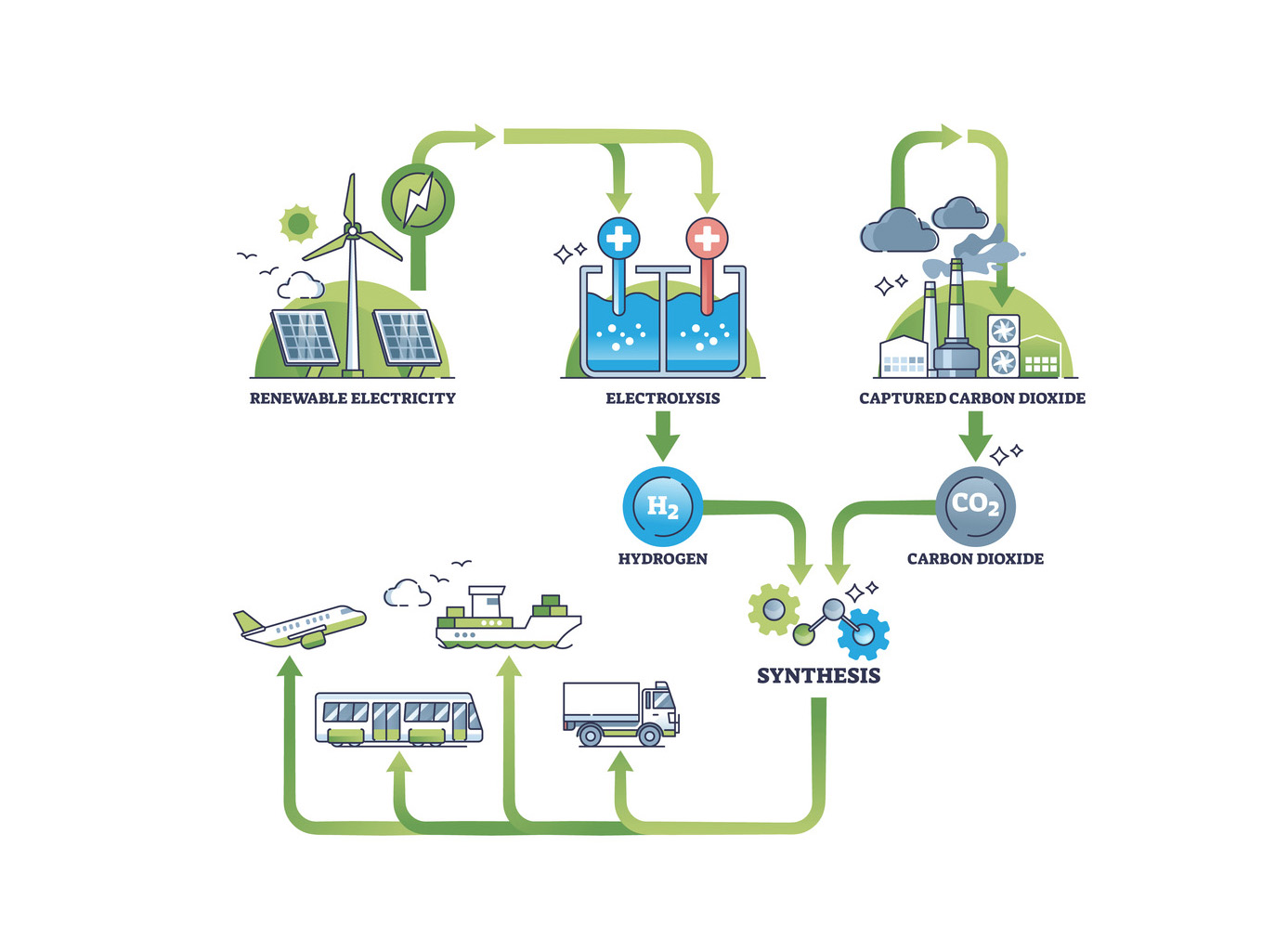
Carbon capture and storage technology (CCS) is a set of technologies that allow carbon dioxide (CO2) to be captured from large sources such as power plants and industrial facilities and stored in a safe and secure manner. This technology is used to mitigate carbon dioxide (CO2) emissions from large point sources such as power plants, refineries, and cement plant. The captured CO2 is stored or utilised to prevent its release into the atmosphere.
How does carbon capture and storage technology work?
Carbon capture and storage (CCS) is a technology designed to mitigate carbon dioxide (CO2) emissions from industrial processes and power generation. It involves capturing CO2 emissions from large point sources such as power plants, refineries, and cement plants, and then storing or utilizing the captured CO2 to prevent its release into the atmosphere.
The general process of carbon capture and storage involves three main steps: capture, transportation, and storage.
- Capture: The first step is to capture the CO2 emitted from the industrial source. There are several methods used for CO2 capture:
- Post-combustion capture: This method involves removing CO2 from the flue gases after the fossil fuel combustion process. The flue gases are passed through a chemical solvent or adsorbent material that selectively captures the CO2.
- Pre-combustion capture: In this approach, fossil fuels are converted into syngas (a mixture of hydrogen and carbon monoxide) before combustion. The CO2 is separated from the syngas using various techniques such as pressure swing adsorption or membrane separation.
- Oxyfuel combustion: Instead of using air for combustion, pure oxygen is used, resulting in a flue gas stream primarily composed of CO2 and water vapor. The CO2 is separated from the water vapor using condensation or other methods.
- Transportation: Once the CO2 is captured, it needs to be transported to a suitable storage location. Transportation is typically done through pipelines, like those used for natural gas. The captured CO2 is compressed to a supercritical state, which reduces its volume and allows for efficient transportation.
- Storage: The last step is to store the captured CO2 to prevent its release into the atmosphere. There are different storage options available:
- Geologic storage: The most common method is to inject the CO2 deep underground into suitable geological formations, such as depleted oil and gas reservoirs, saline aquifers, or coal seams. These formations act as secure and stable reservoirs, trapping the CO2 underground over extended periods of time.
- Enhanced Oil Recovery (EOR): CO2 can be used to enhance oil recovery from declining oil fields. The captured CO2 is injected into the reservoir, where it acts as a displacing agent, pushing more oil towards production wells. This method provides both CO2 storage and additional oil production.
- Mineral carbonation: This is an emerging technique where CO2 is captured and reacted with certain types of rocks or minerals, converting it into a stable, solid form. The mineralised CO2 can be stored permanently and potentially used for various purposes.
Overall, carbon capture and storage technology aims to reduce greenhouse gas emissions by capturing CO2 from large sources, transporting it, and securely storing it underground or utilising it for other purposes. It is a valuable tool in the transition to a low-carbon economy and mitigating climate change.
What are the benefits of carbon capture and storage technology?
Carbon capture and storage (CCS) technology offers several significant benefits in the effort to mitigate climate change and transition to a low-carbon future.
- Reduction of greenhouse gas emissions: CCS allows for the capture and storage of large amounts of carbon dioxide that would otherwise be released into the atmosphere. By preventing CO2 emissions from industrial processes and power generation, CCS helps to reduce greenhouse gas concentrations and combat global warming.
- Continued use of fossil fuels: CCS enables the continued use of fossil fuels, such as coal and natural gas, while significantly reducing their environmental impact. This is particularly important in industries where alternative low-carbon technologies are not yet economically or technically viable. CCS provides a bridge towards a more sustainable energy mix.
- Carbon neutrality for hard-to-abate sectors: Certain industrial sectors, such as cement production and steel manufacturing, have limited alternatives to fossil fuel use and significant CO2 emissions. CCS allows these sectors to achieve carbon neutrality by capturing and storing their emissions, making progress towards global climate targets.
- Enhanced energy security: CCS can contribute to energy security by ensuring the availability of fossil fuel resources. By capturing and storing CO2, countries can continue to utilize their domestic fossil fuel reserves while reducing the associated greenhouse gas emissions.
- Potential for negative emissions: CCS combined with bioenergy can result in negative emissions, whereby more CO2 is removed from the atmosphere than is emitted. Biomass is used to generate energy, and the resulting CO2 emissions are captured and stored. This process effectively removes CO2 from the atmosphere, helping to offset existing emissions.
- Economic opportunities: CCS technology presents economic opportunities in various areas. It can create new industries and job markets focused on the development, implementation, and operation of CCS projects. Additionally, CO2 utilization, where captured CO2 is used in manufacturing processes or the production of fuels, chemicals, and building materials, can further enhance economic benefits.
While CCS is not a sole solution to climate change, its deployment alongside renewable energy sources and energy efficiency measures can play a crucial role in achieving global emission reduction targets and transitioning to a more sustainable and low-carbon future.
By capturing CO2 from large sources, transporting it, and securely storing it underground or using it for other purposes, CCS aims to make a significant difference in the fight against climate change.
When combined with renewable energy sources and energy efficiency measures, this technology can play a crucial role in achieving global emission reduction targets and transitioning to a low-carbon future.
Let’s work together for a more sustainable and low-carbon future! Contact us today to discuss carbon neutral and low carbon certification programs for your business.


